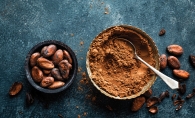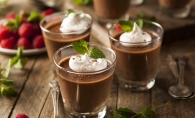For Beth Allen’s friends and neighbors, her Deephaven backyard is—literally—a delicious place to be. Every spring, Allen turns her yard into a maple sugaring paradise: tapping maple trees, boiling down sap and making gallons of fresh syrup. The Vermont native has spent a lifetime sugaring, and now she’s sharing her knowledge with folks in the lake area.
We talked with Allen to learn more about her favorite pastime. And, we wondered, what makes a successful sugaring operation? A little know-how, some basic equipment and, most important, a deep connection with nature. Pretty sweet, huh?
From New England to the Midwest
Beth Allen grew up in Vermont, where sugaring is a deeply ingrained part of history and heritage. She learned about sugaring from her family, but didn’t get a chance to try it until she was in college. “We had seven acres in Vermont,” she says of her childhood home. “We raised chickens but not maple trees! My dad used to help on his family farm, and I heard all these stories about him sugaring as a kid with his grandparents.”
When Allen, 65, was in her early 20s, she starting helping at a friend’s sugaring operation, and she quickly fell in love with it. “It was one of those things—when the sap would run, I needed to be tapping it,” she remembers.
Allen traveled around Vermont a little, setting up her gear at friends’ farms and sugarhouses. “Once, I lived in an old schoolhouse. I had my Volkswagen, and I’d put two milk cans in the backseat. I’d tap the farmer’s trees up the roads, dump the sap in my cans and bring them down to the schoolhouse. I made an [evaporating] arch out of cement blocks.”
For several years, Allen worked with her husband in an old-fashioned Vermont sugarhouse. With 500 taps in the surrounding maple trees, they could make 100 gallons of syrup a season—and that’s impressive, since it can take around 30-50 (!) gallons of sap to make a single gallon of maple syrup. “We’d snowshoe up to the sugarhouse with a hammock, and boil all night,” Allen says. “We started watching the constellations, how they’d change from season to season.”
That close attention to nature is essential for the sugaring process, says Allen. There are just a few days, at the most a few weeks, each spring, usually in March, when maple sap runs, so a good sugarmaker needs to know when to tap the trees. “Not too early or it might freeze tight again!” says Allen’s husband, Kurt Wolff. “And not too late—you don’t want to miss days when the sap is running.”
Allen and Wolff moved to Minnesota 29 years ago, and raised their kids, Gunther and Emily, in Deephaven. After spending many years as a social worker, Allen continues to interact with kids as an educator with Minnetonka schools. She also works for Journey North, an online platform that connects nature lovers across the country. Allen, like other contributors, observes seasonal changes in her own neck of the woods—like sap running in spring or monarch butterflies’ migration in late autumn—and posts them online to share with other nature enthusiasts, from retired birdwatchers to elementary schoolchildren.
“We’re following the path of spring as [the seasons] change across the country,” Allen says. “It’s a great way for me to be in contact with other people who are sugaring around the country.”
Sugaring: Behind the Scenes
So how does a sugaring operation really work? Well, the most important ingredient is—of course—maple sap. Sugar maples are the primary source for sap that gets turned into syrup, but you can successfully tap other varieties of maples, too, says Allen. “The problem is that the percentage of sugar [in other varieties] isn’t as high, so you need to boil even more to get syrup.”
In late February or early March, Allen starts watching carefully for signs that sugaring season has arrived. First is temperature: “You want 40-degree days and freezing nights,” she says, which starts the sap running. “Sometimes you see the sap starting to drip down the sides of the tree,” says Allen. “You might see the snow receding from the base of the tree as it’s warming up. You’ll see squirrels chewing on the bark because it’s wet with sap. The sun is higher, and melting is starting.” Allen usually does at least one test tap when she thinks the time is right.
“I take an auger and a bit, and make a hole in the tree. The hole slants slightly, so when the sap runs, it’s easy for it to flow down. I make sure not to tap underneath dead wood—usually I tap over a large vein that’s coming out of the tree, or under a big branch.” General sugaring guidelines say that you should never tap a tree that’s smaller than 12 inches or so in diameter, and never put more than two taps in a single tree.
After drilling a hole, Allen adds the tap—or spile—through which the sap flows. She hangs a metal bucket on each spile and waits for the sap to start dripping. “If it’s really running, you can fill a bucket easily in a day,” she says, “and sometimes even twice.” Allen and her helpers, including her family and a gaggle of neighbors, collect the buckets and store the sap in big containers in the yard, piled high with snow to keep them cold. “We try to boil the sap as soon as it comes out of the tree,” Allen says. “It makes the best syrup.”
Allen uses a wood-fired evaporator to boil her sap: Big metal pans sit on top of a brick structure, and a wood fire underneath heats the sap, bringing it to a bubbly boil. Much of the water evaporates, rising in big clouds of steam and leaving behind thick, sugary syrup. In a good year, says Wolff, the sugaring team can cook 30–60 quarts of syrup—most of which goes right into the hands that helped make it. “I give most of it to family and friends,” says Allen.
The neighbors look forward to sugaring almost as much as Allen, says Brian Schmidt, who lives next door. “After everybody’s cooped up all winter, sugaring corresponds with the improving weather. It’s become a neat social event.” Allen spends time with the neighbor kids, teaching them about sugaring and the coming of spring. Schmidt laughs. “My kids are over there with their tongues underneath the spigots,” he says, getting a first taste of fresh sap. “They like pitching in. It’s fun to tromp through the snow and gather the buckets off the trees.”
After a few days of tapping, gathering, boiling and bottling, the sugaring season is over almost as quickly as it arrives. “Making syrup is an inherent part of spring,” says Wolff. “When the buds are on the trees, the peepers are peeping and moths are flying, the season’s over. Then I help Beth pull the taps, wash the pans and buckets, and put them away for next year.”
But for this Deephaven neighborhood, sugaring season lives on all year in those pretty dark bottles of homemade maple syrup. Mmm.
Visit learner.org/jnorth to follow spring’s arrival across the country.
You can check out a maple sugaring demonstration at one of our local parks.
Three Rivers Park District offers the following events:
Walk When the Moon is Full: Maple Moon, Eastman Nature Center, March 16, 7–8:30 p.m., $5 per person
Maple Syrup Festival at Eastman Nature Center, March 22, 1–4 p.m., $5 per person
Maple Syrup Time at Lowry Nature Center, March 23, 12:30–2 p.m., $5 per person.
For more events and other details, visit the Three Rivers Park Website.









